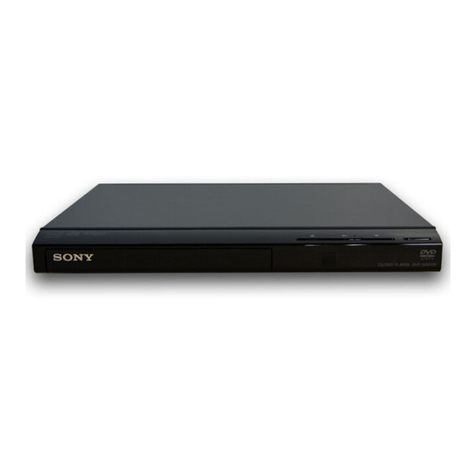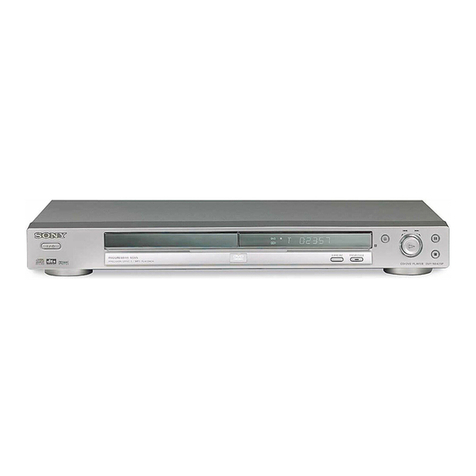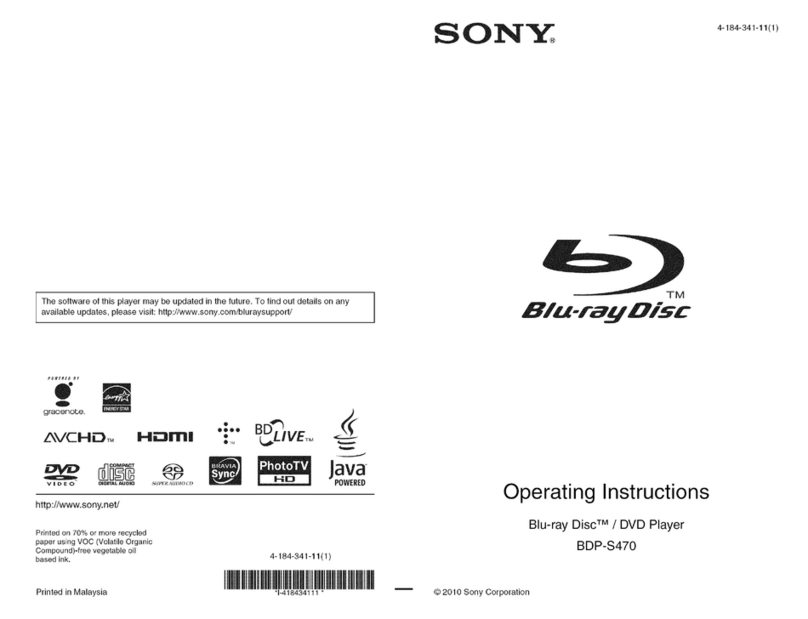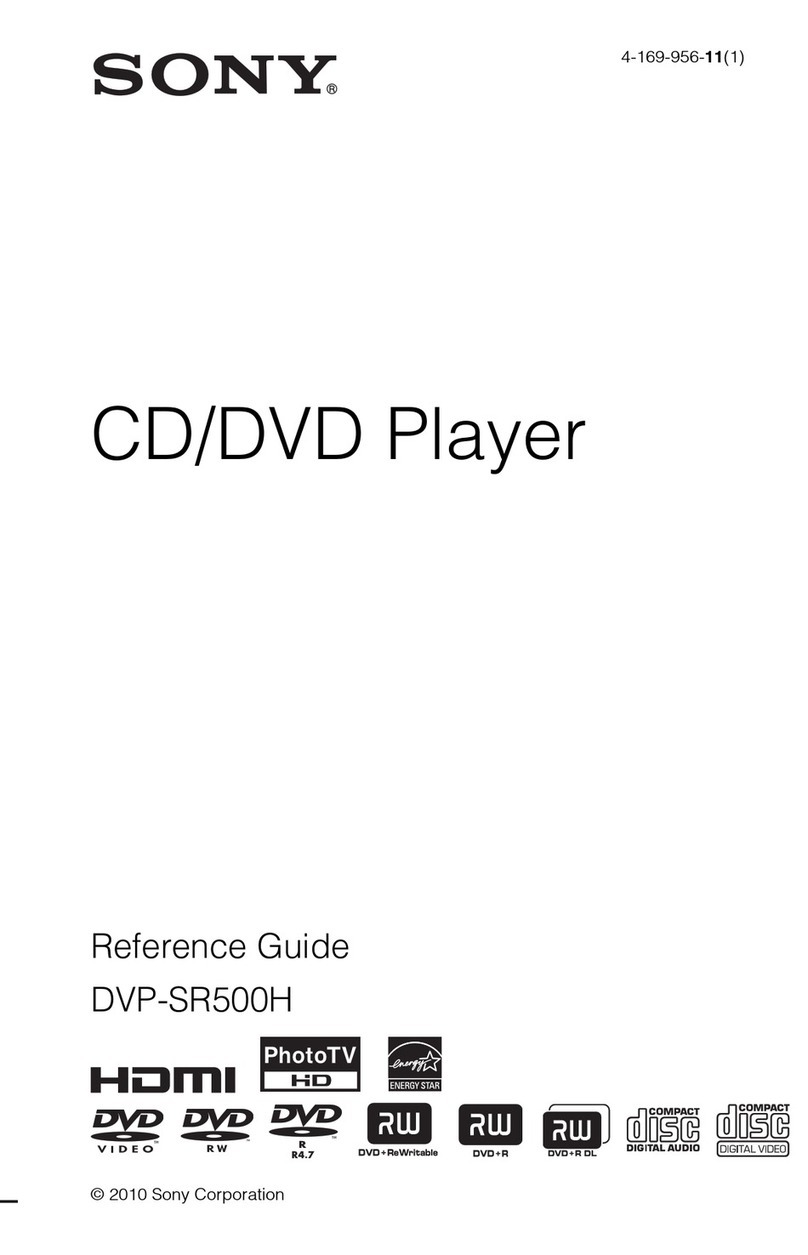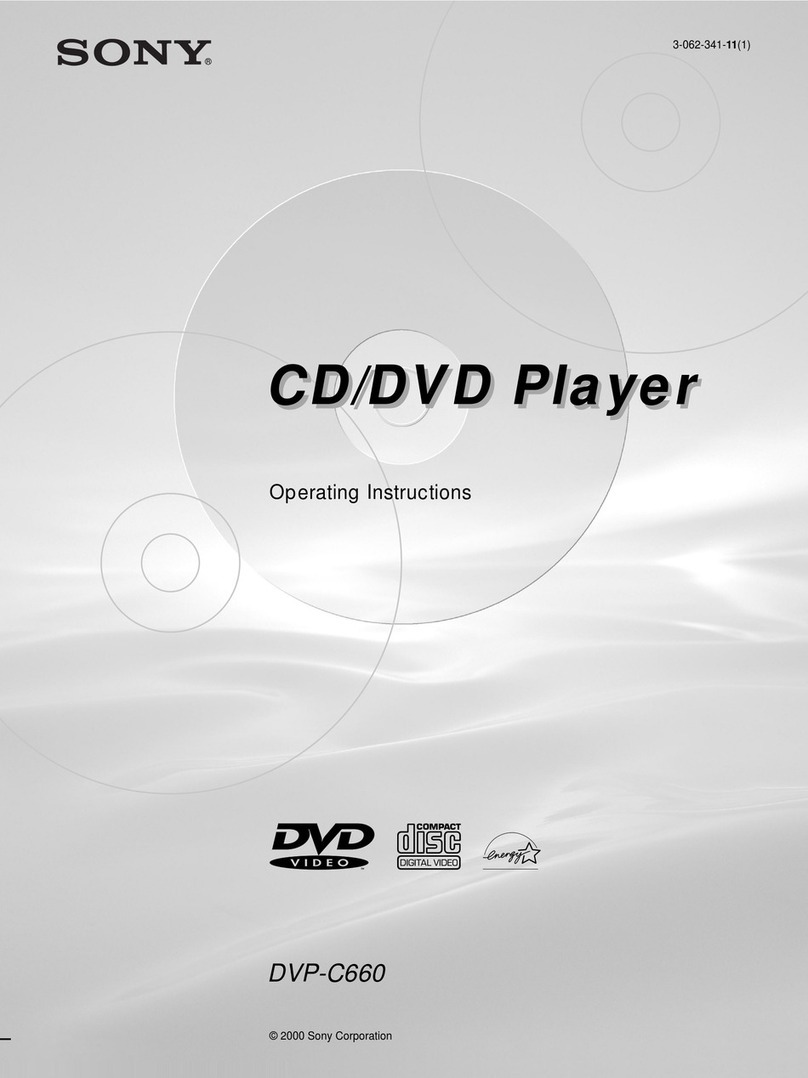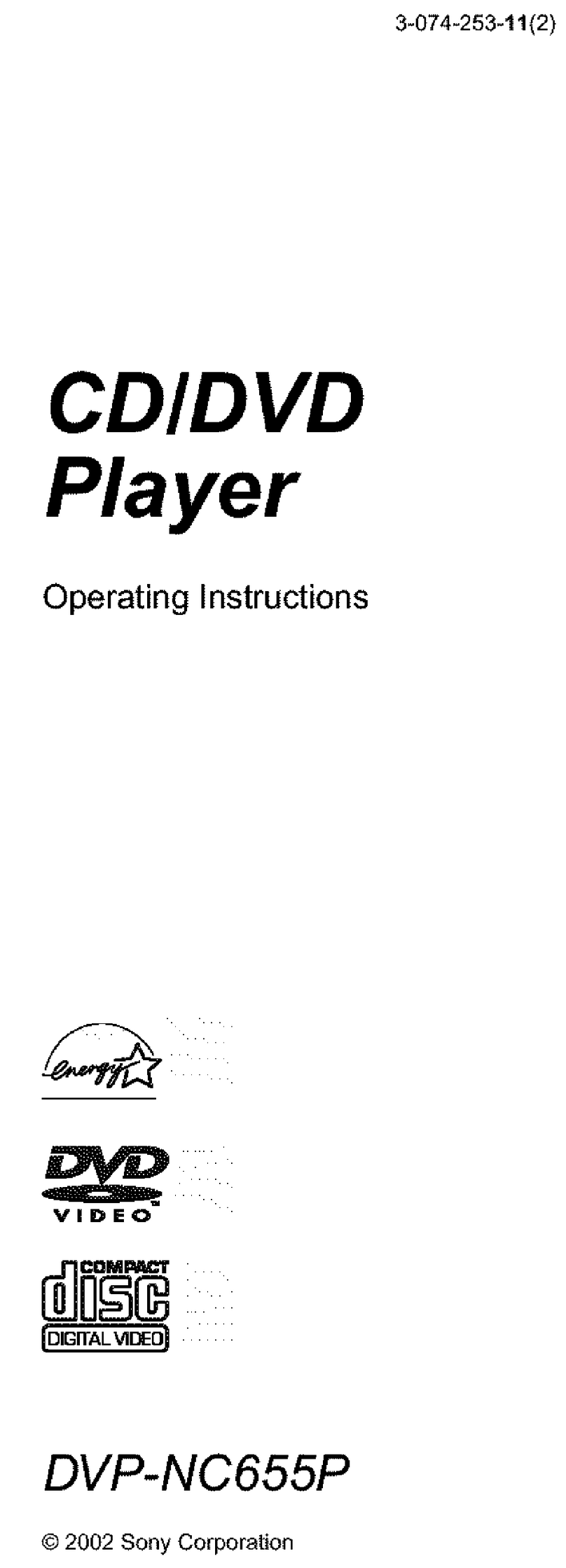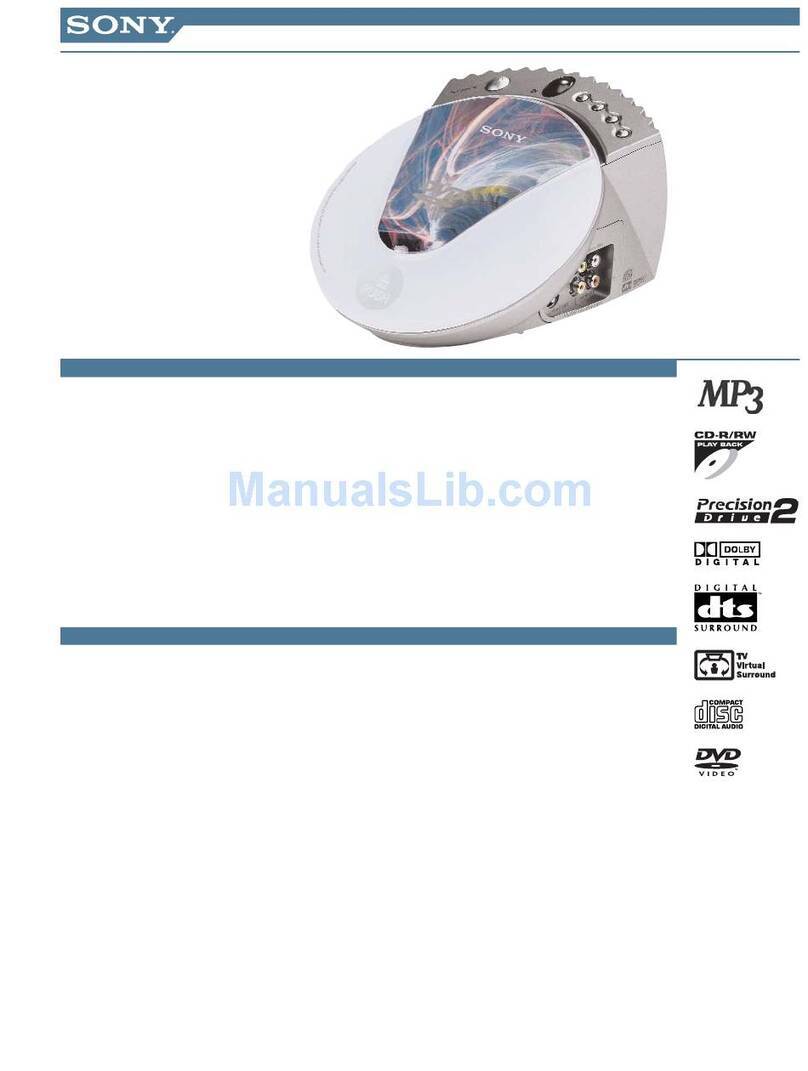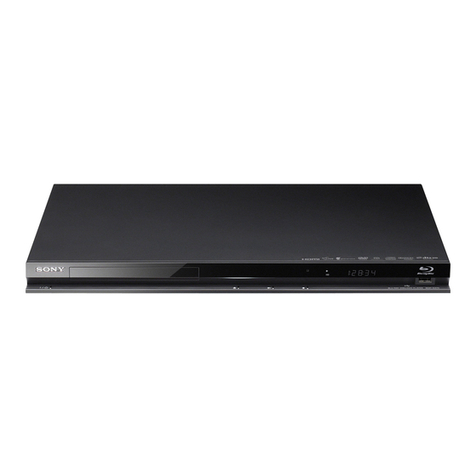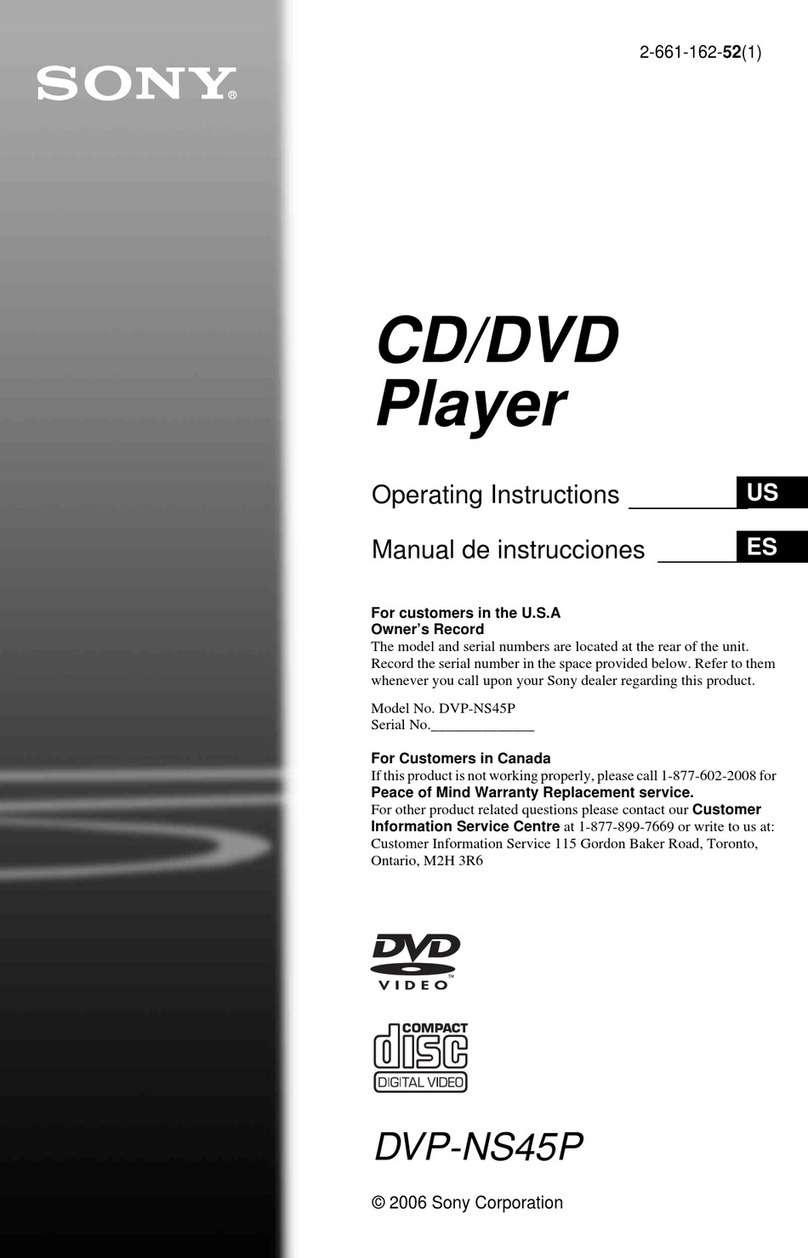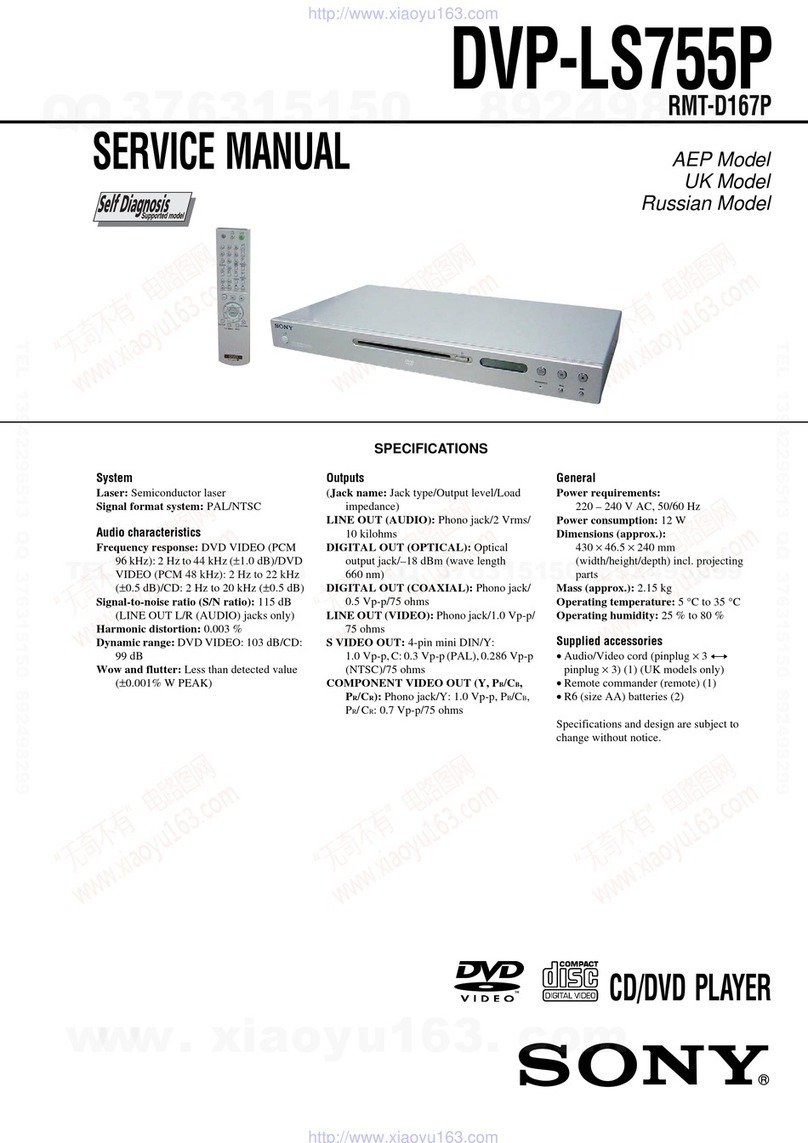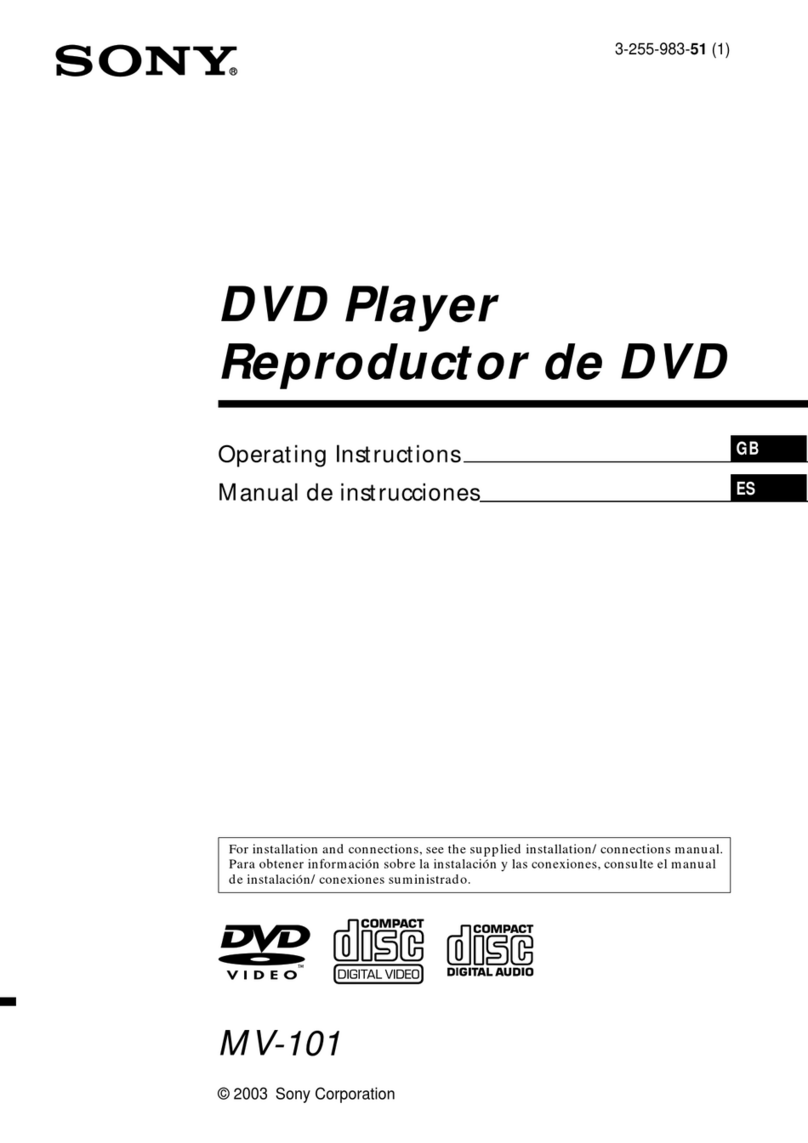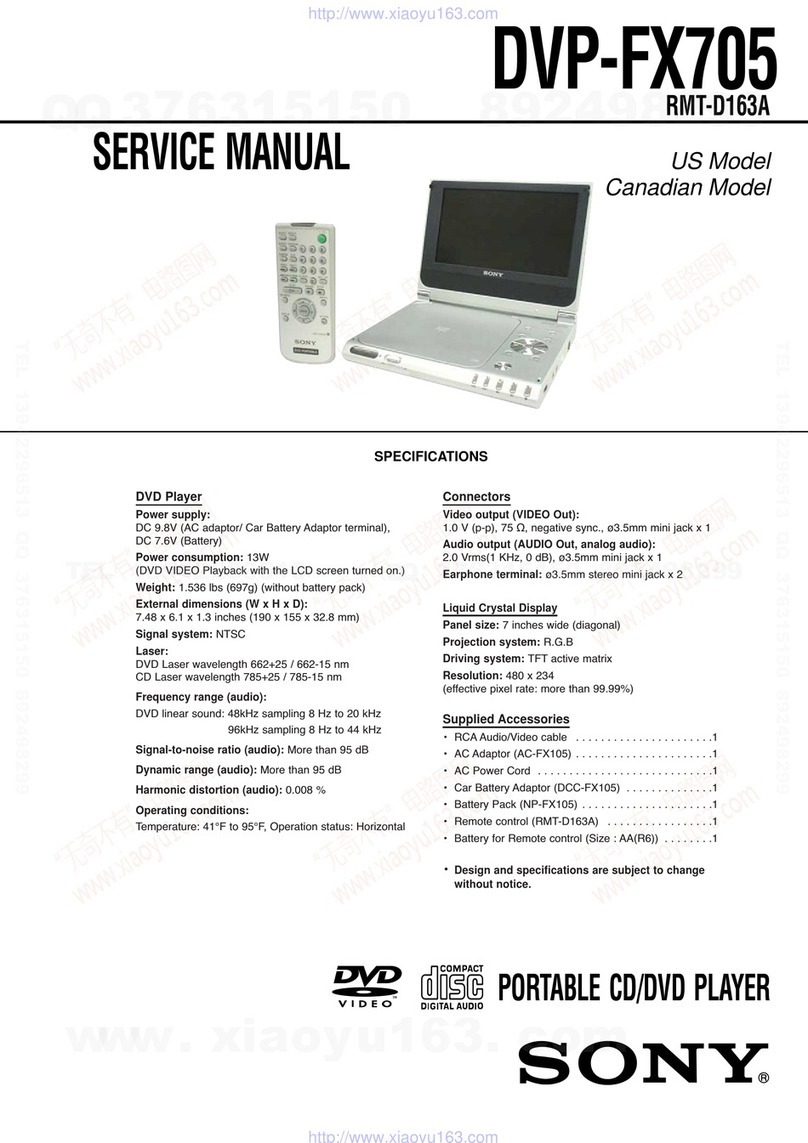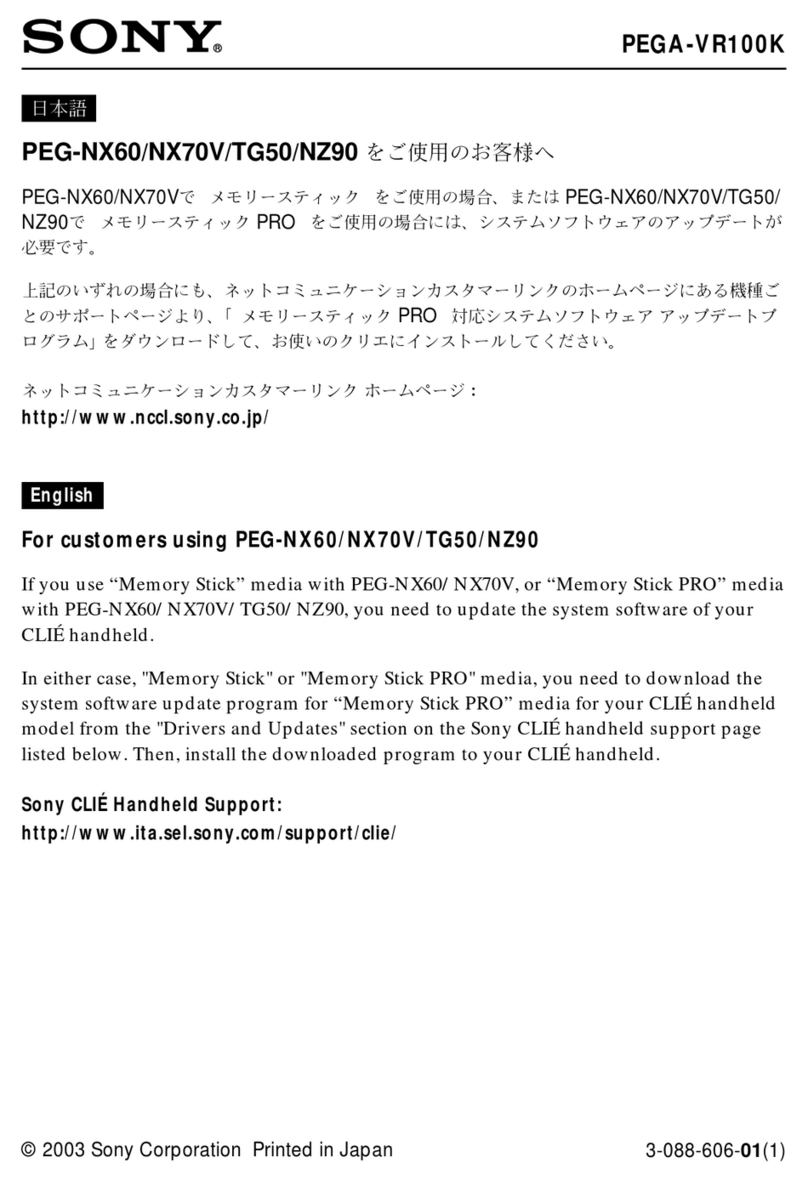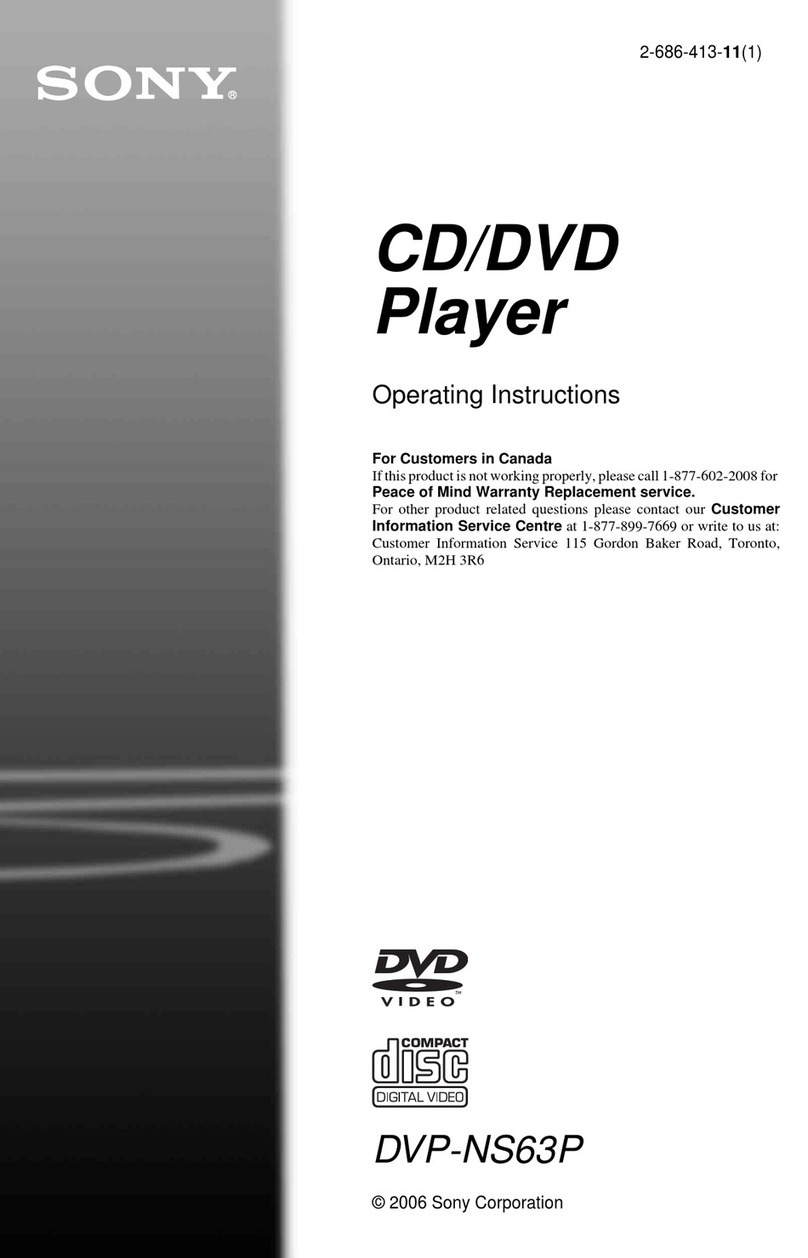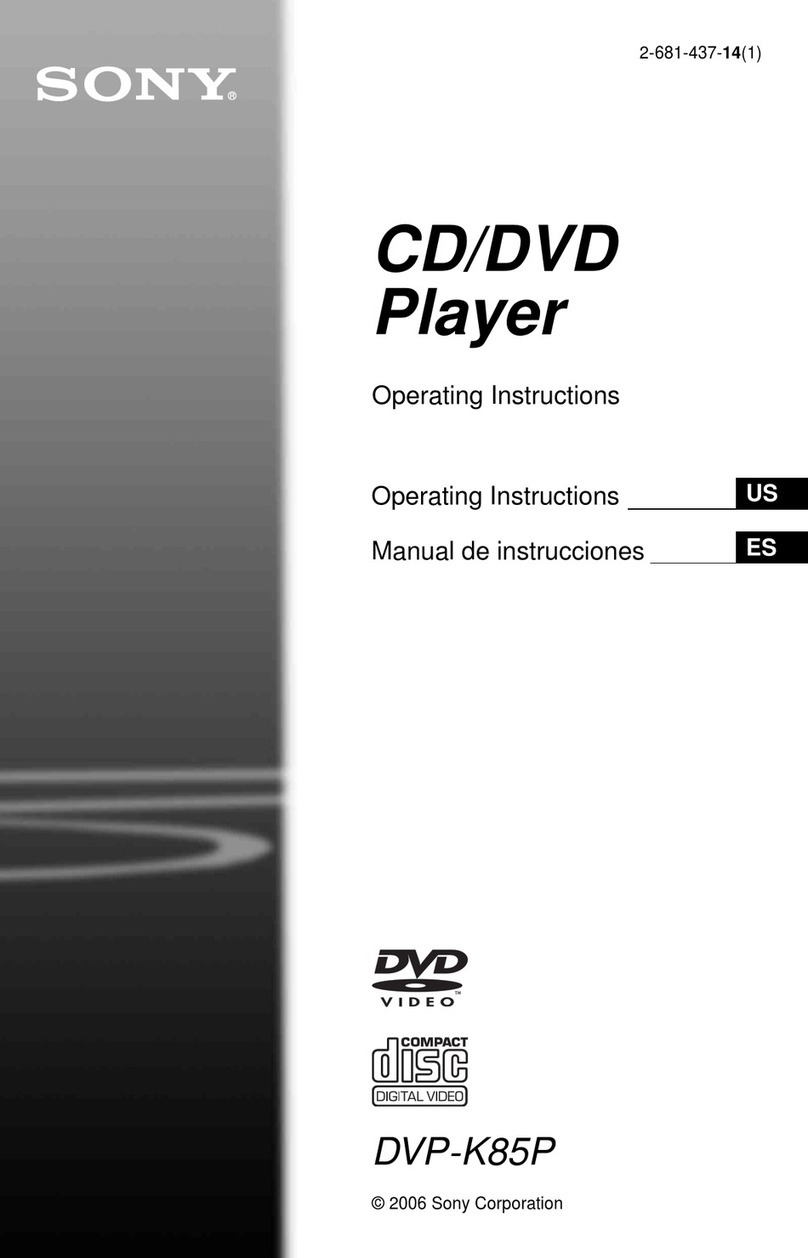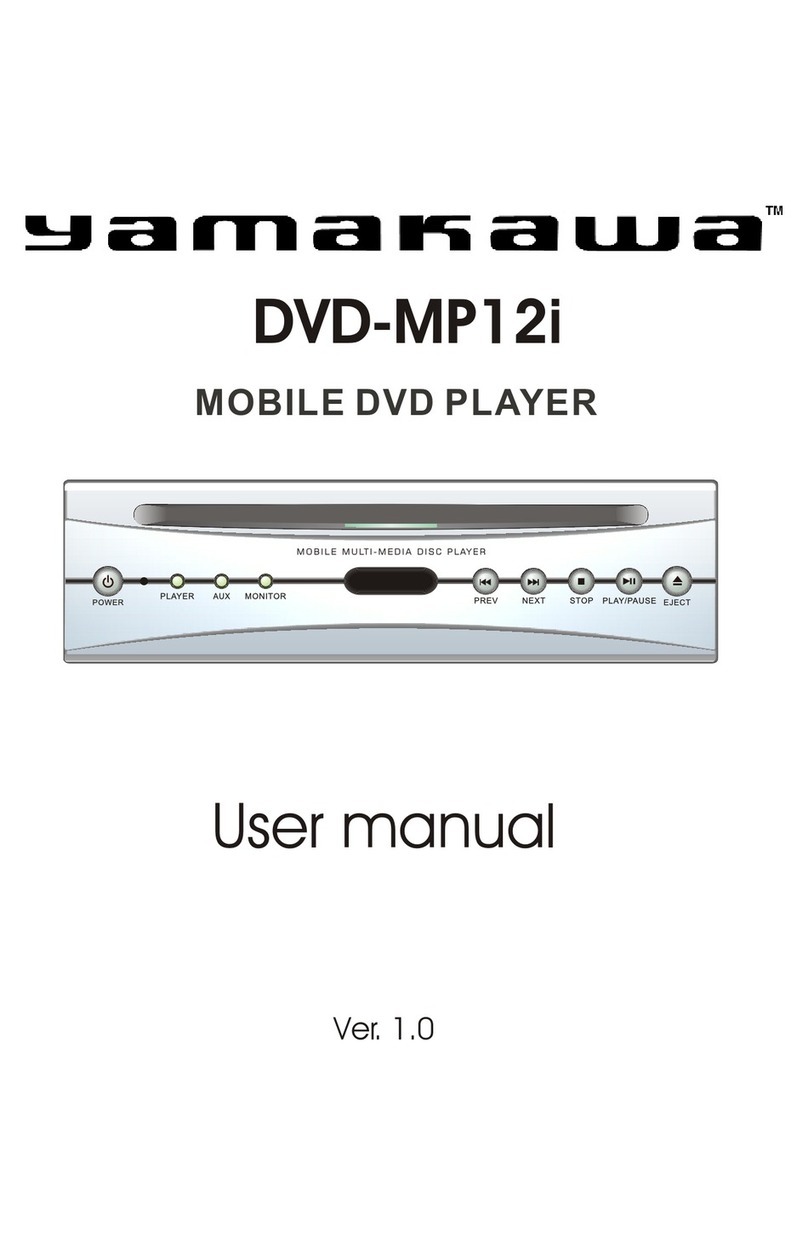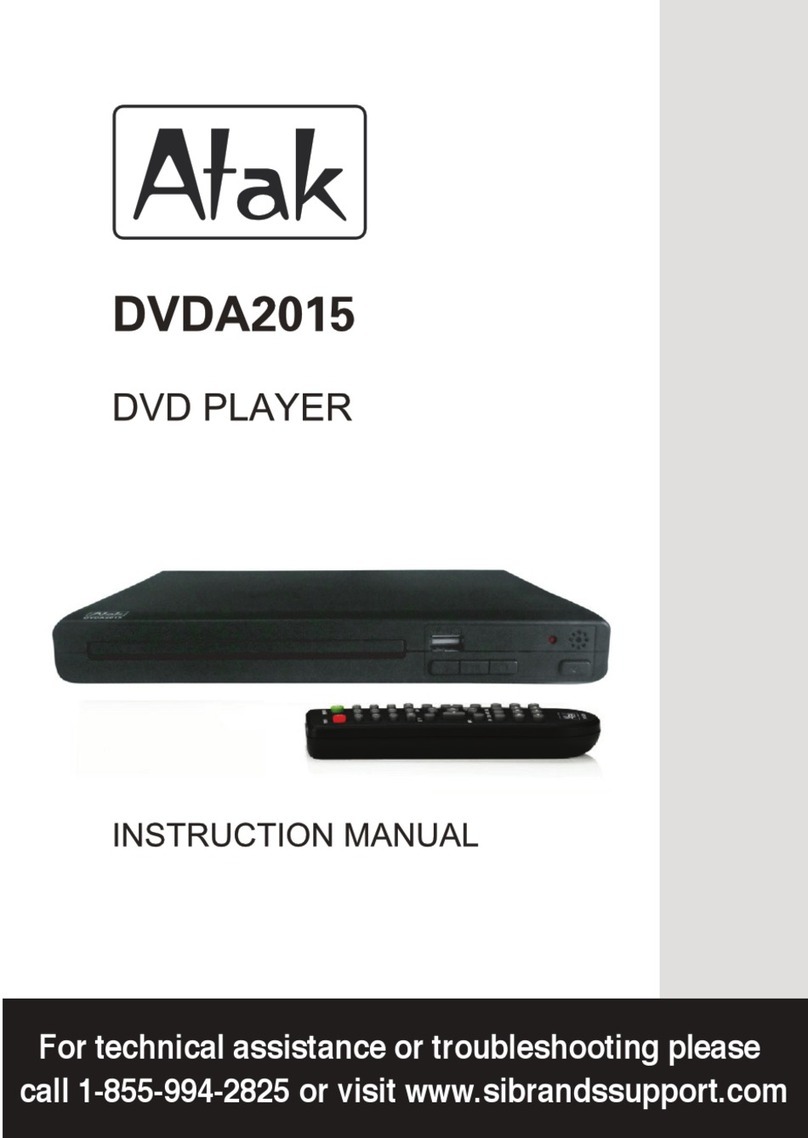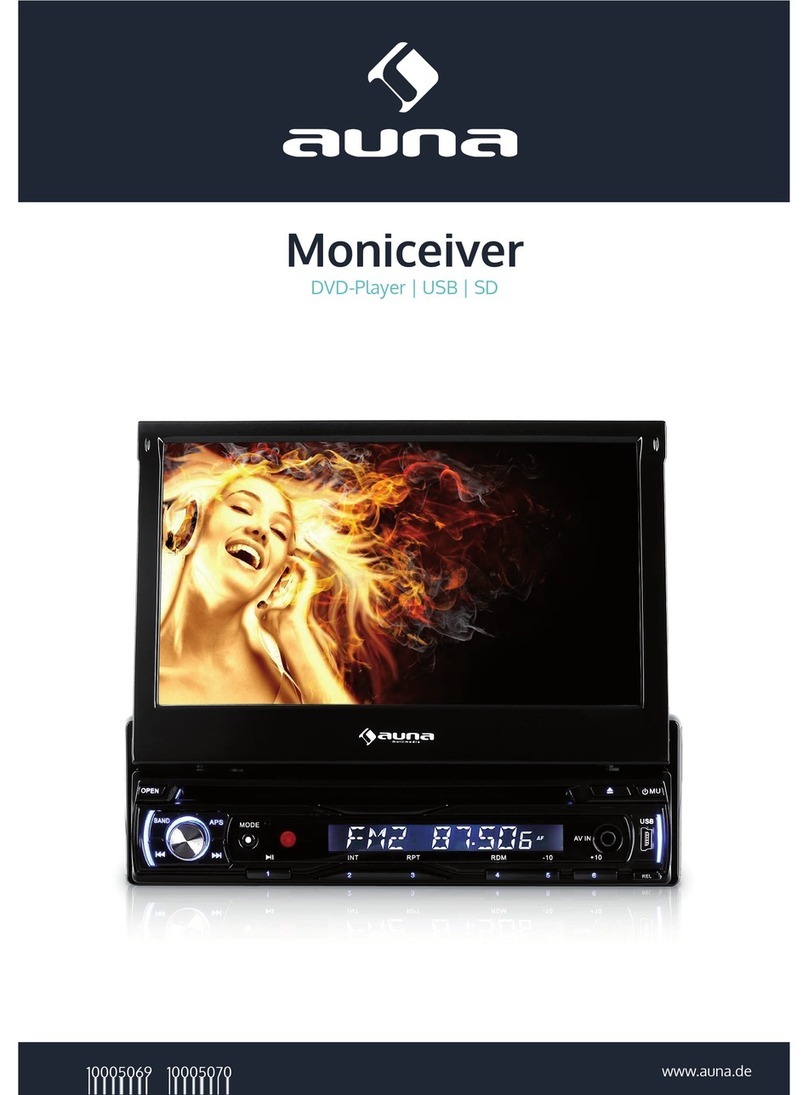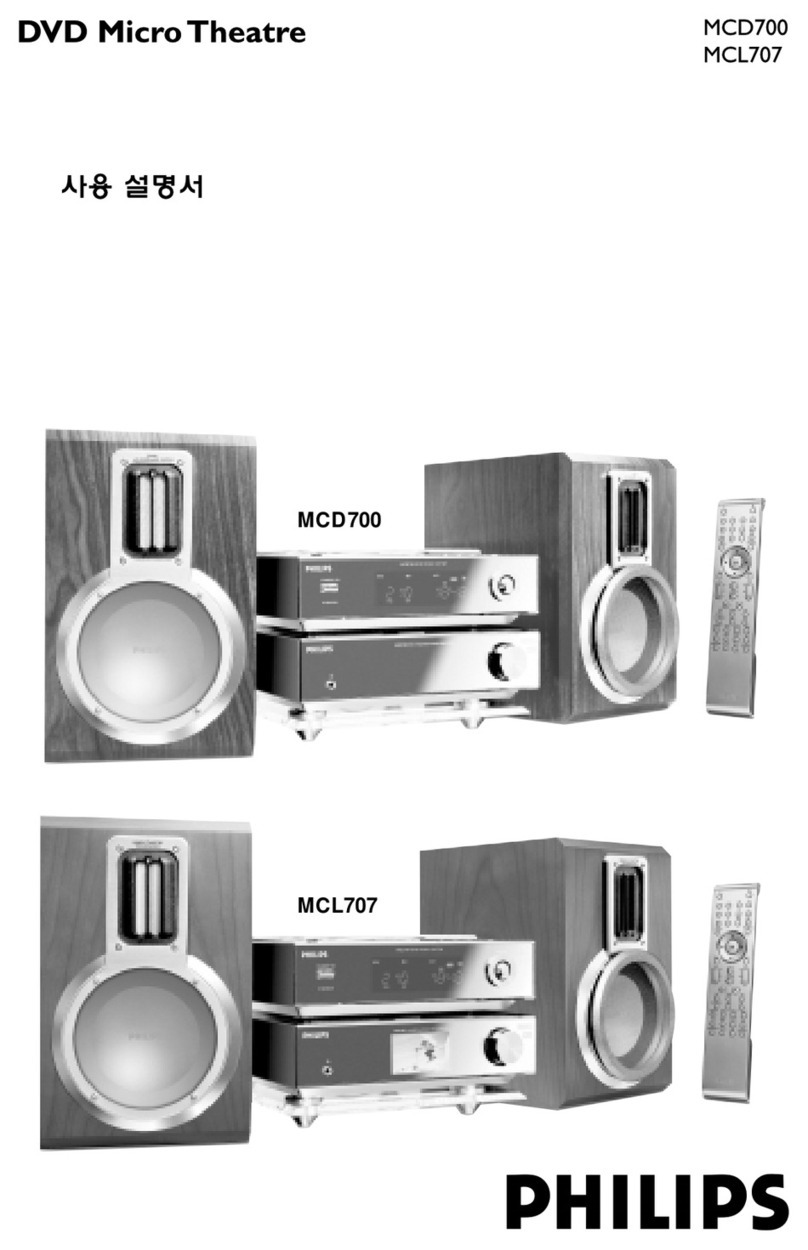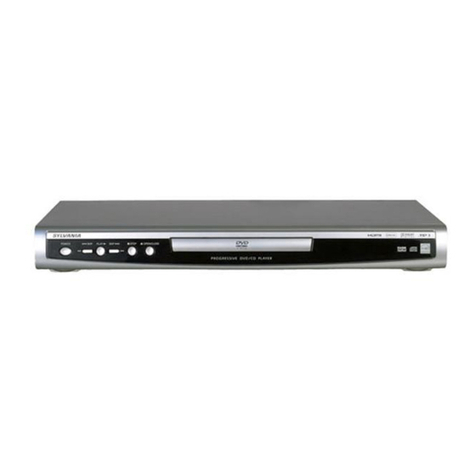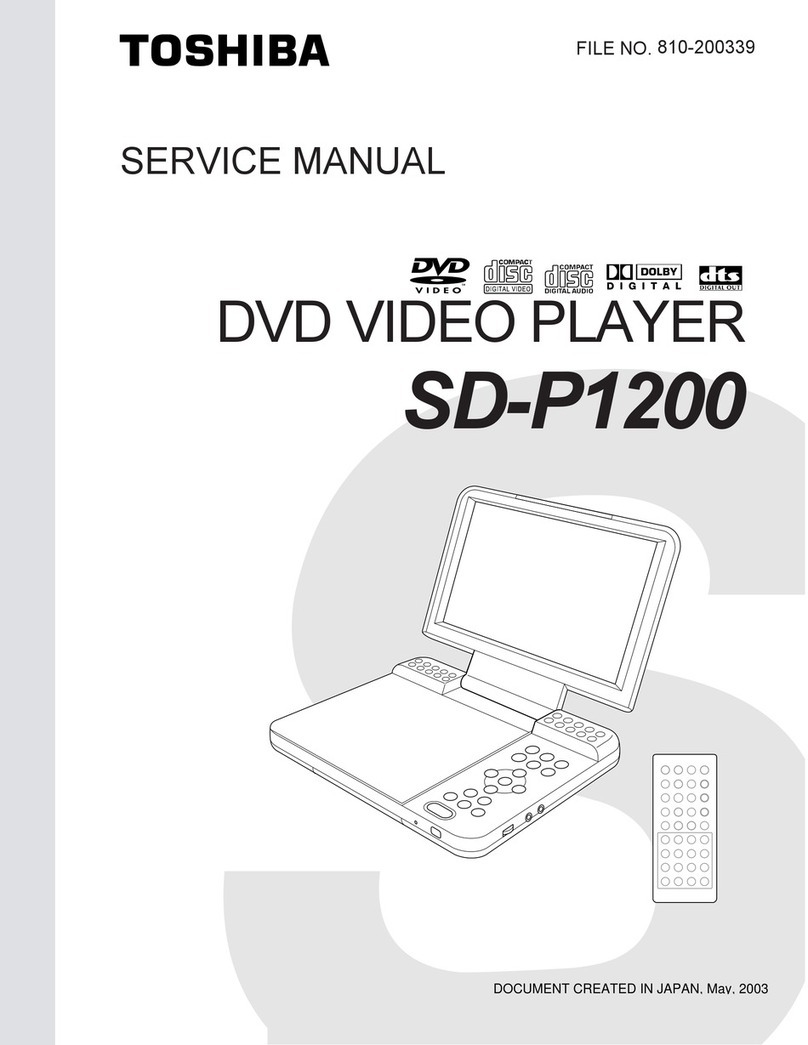
2
1. What’s New?
Features
These players can play computer “burned” -R and +RW (CD or DVD) discs. A built-in MP-3 decoder allows MP-
3 encoded CD’s to be played. All 5th generation players have outputs for composite video, component video (Y,
R-Y, B-Y) and Dolby Digital ™ / dts ® digital coax/optical digital audio (except DVP-F25 and DVP-F41 models
which only have high grade component video and optical audio outputs) Other features on some models are:
multi-format SACD music CD PB (audio); and high resolution 480p progressive video output.
Table 1-1 shows some of the features of the Fifth Generation models.
Table 1-1 -Sony’s Popular Fifth Generation DVD Players
Model Number Intro
Year * Type Feature
DVP-NS300 2001 1 disc tray Case = Blk or Silver finish. Does not
PB –R or +RW discs.
DVP-NS315 2002 1 disc tray Black or Silver finish
DVP-NS400D 2001 1 disc tray Built in 5.1 Digital Dolby Decoder
DVP-NS415 2002 1 disc tray Silver, Built in 5.1 Digital Dolby
Decoder
DVP-NS500P 2001 1 disc tray Progressive scan
DVP-NS700P 2001 1 disc tray Progressive scan
DVP-NS715P 2002 1 disc tray Progressive scan, Silver
DVP-NS755P 2002 1 disc tray Progressive scan, SACD, Built in 5.1
Digital Dolby Decoder, Blk.
DVP-NC600 2001 5 disc Changer No thinner case like the tray units.
DVP-NC650 2001 5 disc Changer SACD
DVP-NC655P 2002 5 disc Changer Progressive scan, Blk/Silver.
DVP-CX875P 2002 300 disc changer Progressive scan, Built in 5.1 Digital
Dolby Decoder.
DVP-F25 2002 1 disc slot Case = Blk or Silver finish.
DVP-F41MS 2002 1 disc slot Memory stick for JPEG pix view
* Optical Assemblies for 2001 year Models are KHM240AAA and KHM250AAA Optical
Assemblies for 2002 year Models are KHM270AAA and KHM275AHA.


